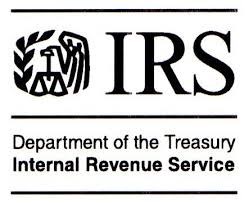Baltimore, MD (PRWEB) July 29, 2014
Plenty of everyday people are choosing to live on the water full-timein their retirement, says InternationalLiving.com editor Jason Holland, author of the publications new report. After a bit of training and hands-on experience at home, theyre tying up beside mega-yachts in the Mediterranean, finding large floating communities of like-minded expat sailors in the Caribbean, and island hopping in the Gulf of Thailand, heading wherever their fancy takes them.
According to Holland, This lifestyle can be more affordable than most folks assume, allowing them to live on the water for less than it would cost to stay home. For under $ 100,000, you can buy a well-equipped used sail boat around 40 feet in length, which has plenty of room for two people.
As the report explains, living costs for a couple can be as little as $ 1,000 to $ 1,500 a month, including marina fees (at a full-service marina facility that typically includes water, power, wifi, and other amenities). These fees are usually based on the length of the boat and generally run from $ 150 to $ 600 per month, depending on location. Marinas in Asia and Latin America tend to cost less; those in Europe more.
Expats Carol and Kent Witt anchored throughout the Med during their sailing retirement. We once anchored off Capo Palinuro, south of Italys Amalfi Coast, says Carol. The water there is perfect for swimming and snorkelingtwo of our favorite pastimes. On the cliff overlooking our anchorage was a hotel that charges $ 342 a night. Guests have to walk down a rickety network of several hundred steps to reach the cove that serves as the resorts beach. At night we went ashore and enjoyed the fancy hotels sunset views and ambience for the price of a cocktail.
A sailing life is easier and safer than ever before, thanks to modern technology for navigation and communication, the report reveals.
With GPS for navigation you always know exactly where you are, a safe route to get where youre going and how long itll take to get there, says Holland. You program in the destination, just like with a land GPS. You have radar for monitoring weather. And there are even monitoring systems that help you avoid large commercial ships.
Most folks start with basic sailing classes. Gary Pierce knew nothing about sailing. But that wasnt going to stop me, he says. Over the next four years my wife Julie and I prepared, taking the baby-steps approach to sailboat life. I read everything I could get my hands on about sailing and cruising. We started taking sailing lessons in Kemah, Texas, 90 miles from our home.
The Caribbean offers a well-established boating infrastructure, as well as plenty of deserted islands to explore. Its proximity to the eastern U.S. makes it a great place to try out life at sea. Right now, Im looking at turquoise, clear waters in all directions, says expat Tina Dreffin, 58. The sky is always blue, and the weather is warm year-round. And we catch dinner off the back of the boat. She, along with her husband, Peter, 63, lives aboard the couples catamaran, Freebird, in the Central Exumas of the Bahamas.
Besides the Bahamas, other top spots in the region include Placencia, Belize; Roatan, Honduras, the Bocas del Toro archipelago of Panama; the British Virgin Islands; and the island of Antigua.
Sailors have plied the Mediterranean in their pleasure craft since the days of the Phoenicians, Greeks, and Romans and today expats continue to do so. Weve hopscotched our way along the northern Turkish coast and sailed between Greek islands where everything is blue and whitethe sea, the sand, the sky, and the houses, says Carol Witt. In fact, weve sailed all over the Mediterranean. Anyone can retire like this. I did it at 60 and I wasnt a sailor.
As well as featuring stories from expats who are cruising the Med and Latin America, International Livings report also explores a sailing retirement in Asia, where a couple can enjoy this lifestyle from $ 2,000 a month.
The full report on expats enjoying a sailing retirement, which includes resources to help learn the arts and sciences of sailing, navigation, boat repair and maintenance, and more, can be read here: Find Your Sea Legs with an Affordable Boating Retirement.
Editor’s Note: Members of the media have full permission to reproduce the article linked above once credit is given to InternationalLiving.com.
Media Contact: For information about InternationalLiving.com content republishing, available source material or to book an interview for radio, TV or print with one of our experts, contact Associate Editor Carol Barron, 772-678-0287 (US), CBarron(at)InternationalLiving(dot)com or visit the Media Center. For automatic updates on the most current stories, follow International Living Media on Twitter.
For more than 30 years, InternationalLiving.com has been the leading authority for anyone looking for global retirement or relocation opportunities. Through its monthly magazine and related e-letters, extensive website, podcasts, online bookstore, and events held around the world, InternationalLiving.com provides information and services to help its readers live better, travel farther, have more fun, save more money, and find better business opportunities when they expand their world beyond their own shores. InternationalLiving.com has more than 200 correspondents traveling the globe, investigating the best opportunities for travel, retirement, real estate, and investment.
###









